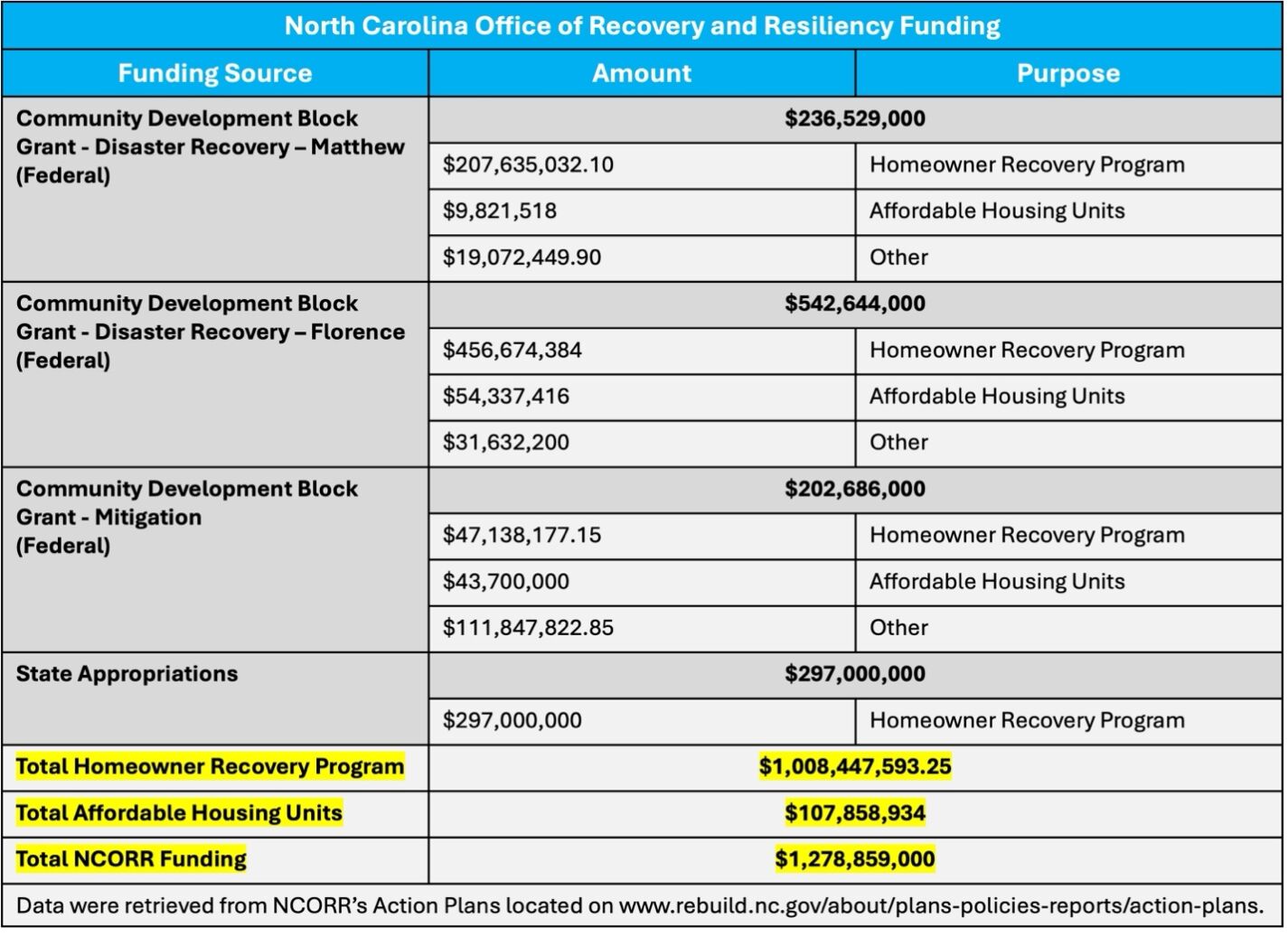Thanks to the failures of former Gov. Roy Cooper’s North Carolina Office of Recovery and Resiliency (NCORR), hundreds of families whose homes were destroyed by Hurricanes Matthew (2016) and Florence (2018) are still living in temporary housing.
Instead of prioritizing direct hurricane victims, NCORR allocated more than $100 million of federal funds toward building affordable housing units, which are rental apartments available to anyone with an income below a certain threshold.
There’s no clearer example of this misjudgment than the $9 million that NCORR gave to the City of Wilmington to help fund a 278-unit luxury apartment complex. The apartments are open to anyone earning up to roughly $45,000 a year, and the complex’s own homepage features a photo of a young, carefree couple lounging on the beach — no joke.
So, while college students and young professionals enjoy discounted rent on taxpayer-subsidized luxury apartments, families who lost everything nine years ago to Matthew still live in aging campers and rundown motels.
Unfortunately, the agency replacing NCORR for Hurricane Helene recovery — the Division of Community Revitalization (DCR) — is repeating the same mistake. They’ve allocated nearly $200 million toward building new rental apartments, a decision almost certain to create another budget shortfall before every Helene victim’s home is rebuilt.
NCORR (Hurricanes Matthew and Florence)
Despite receiving $779.2 million in federal disaster recovery funding eligible for home reconstruction, NCORR initially allocated only $429.7 million to its Homeowner Recovery Program (HRP).
The agency eventually increased that amount to $664.3 million as the program began running out of funds. However, even then, the $664.3 million was only enough to rebuild homes for about 70 percent of families enrolled in the HRP, forcing the North Carolina General Assembly to step in with an additional $297 million in state taxpayer funds to complete the remaining homes.
Additionally, NCORR received $202.7 million in federal mitigation funding, intended to strengthen infrastructure and mitigate future flood risk. Although mitigation dollars were initially ineligible for home reconstruction, once the disaster recovery funds were exhausted, NCORR ultimately created a $47.1 million carve-out of mitigation funds to help elevate homes in the HRP.

In total, NCORR has devoted more than $1 billion to the HRP when combining federal disaster recovery, mitigation, and state appropriations. At the same time, it diverted $107.9 million toward affordable rental housing, including $64.2 million from disaster recovery funds and $43.7 million from mitigation funds.
As of February 10, 2025, more than 1,000 families were still waiting for the reconstruction of their homes. NCORR told lawmakers that, with the additional state funds, everyone would be back home by the end of 2025, except for maybe 39 “atypical” cases. However, as of September 25, 2025, approximately 400 families were still waiting.

Despite being touted as entirely different from NCORR, the DCR has decided to allocate $191.3 million to affordable rental housing and an additional $53.4 million toward workforce housing for ownership, which is essentially affordable housing for purchase rather than rent.
Meanwhile, their version of the HRP, which is designed to help direct hurricane victims whose homes have been destroyed, the Renew NC Single-Family Housing Program (Renew NC), has been allotted only $807.4 million, which is roughly $200 million less than it will ultimately cost NCORR to complete its HRP, provided they don’t request additional funding.

Meanwhile, early projections indicate that Renew NC is likely to have at least 1,000 more participants than the HRP. Furthermore, there has been significant inflation over the last few years.
Simply put, the DCR has decided to allocate approximately 20 percent less money to rebuild 20 percent more houses, at prices that are about 20 percent higher. The math doesn’t add up.

Policy recommendations
Former Gov. Roy Cooper’s NCORR failed the people of our state and should be dissolved immediately upon the completion of the remaining few hundred homes.
The DCR has shown improvements in transparency compared to NCORR by creating a regularly updated online progress tracker; however, it is allocating hundreds of millions of dollars to affordable housing units, which was arguably NCORR’s biggest mistake.
Federal disaster recovery programs require that funds benefit low to moderate-income residents and be used primarily in the most impacted and distressed areas. Otherwise, states have broad discretion over how the federal funds are spent. Simply put, no federal rule mandated that NCORR or the DCR direct any amount of funds to affordable housing units — those were state-level policy choices.
All unspent dollars now earmarked for “affordable” and “workforce” housing should be immediately redirected to Renew NC, where they can be used to rebuild homes for actual hurricane victims. Likewise, the $500 million the General Assembly allocated to NCInnovation — a scheme with no measurable return for taxpayers — should be reclaimed and reallocated to Renew NC to help hurricane victims.
Redirecting these funds would close Renew NC’s looming budget shortfall and send a clear message: North Carolina has learned from the failures of the Cooper era.










